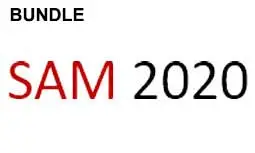Blind source separation methods based on output nonlinear correlation for bilinear mixtures of an arbitrary number of possibly correlated signals
Yannick Deville, Shahram Hosseini
-
Members: FreeSPS
IEEE Members: $11.00
Non-members: $15.00Length: 17:35
11 Jun 2020
Traditional Blind Source Separation (BSS) methods
require quite restrictive properties from the source signals
(typically, statistically independent or at least uncorrelated sources)
and mixing transform (typically, linear instantaneous mixtures).
In this paper, we address a much more complex case, where
the considered deterministic source signals may be correlated
(we only request the source vectors and some associated vectors
to be linearly independent) and where the mixing transform is
nonlinear (more precisely, bilinear, which is e.g. of high interest
for Earth observation applications). We propose a separation
principle leading to a new set of BSS algorithms applicable to an
arbitrary number of sources and based on nonlinear correlation
parameters. Moreover, we analyze the separability properties of
this approach and thus show that it is guaranteed to separate the
sources up to the trivial scale and permutation indeterminacies.
require quite restrictive properties from the source signals
(typically, statistically independent or at least uncorrelated sources)
and mixing transform (typically, linear instantaneous mixtures).
In this paper, we address a much more complex case, where
the considered deterministic source signals may be correlated
(we only request the source vectors and some associated vectors
to be linearly independent) and where the mixing transform is
nonlinear (more precisely, bilinear, which is e.g. of high interest
for Earth observation applications). We propose a separation
principle leading to a new set of BSS algorithms applicable to an
arbitrary number of sources and based on nonlinear correlation
parameters. Moreover, we analyze the separability properties of
this approach and thus show that it is guaranteed to separate the
sources up to the trivial scale and permutation indeterminacies.



